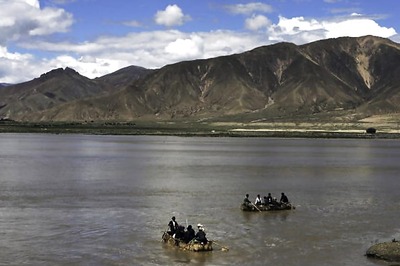
views
Competitive pressure from its biggest rival and the rush to develop its 737 Max 8 jets could have led to Boeing skipping vital safety risks, The New York Times reported on Saturday.
The American manufacturer is currently embroiled in one of the biggest crises to have hit the aviation sector in recent times. On March 10, a Boeing 737 Max 8 jet crashed in Ethiopia, killing all 157 people on board. Four Indians were among those who lost their lives. The crash was the second such incident involving the jet after a 787 Max operated by Indonesian carrier Lion Air crashed into the Java Sea in October, killing 189 people.
After the second crash, several countries moved swiftly to ground the jets, citing safety concerns. China, India, Australia, Malaysia, Singapore and many countries in
Europe ordered the jets off their airspace. The United States followed suit soon after.
Now, US prosecutors are looking into whether the pressure to comply with self-imposed deadlines led to Boeing overlooking important safety features, which includes the
MCAS automated anti-stalling system. The Maneuvering Characteristics Augmentation System (MCAS) is designed to point the nose of the plane downward if it is in danger of stalling or losing lift.
The rush started after American Airlines, which had bought jets exclusively from Boeing for more than a decade, decided to place an order with Airbus in 2011. Airbus, Boeing’s direct competitor, had announced the launch of a fuel-efficient A320 in 2010. Boeing, which at that point was itself planning to launch a new passenger plane, was not initially bothered.
But a possible defection by American Airlines threw a spanner in the work. American Airlines’ then chief executive Gerard Arpey told Boeing’s W James McNerney Jr. to hasten up work on the new aircraft if the company wanted its business. Losing the account would have potentially cost Boeing billions in lost sales and thousands of jobs.
This threat forced Boeing to ditch blueprints for its new plane altogether and, instead, focus on revamping the 737. The company promised American Airlines that the new plane would be ready in the next six years.
It only took three months to come up with the 737 Max.
According to current and former employees at Boeing, the company worked at breakneck speed to catch up with Airbus. Engineers were compelled to submit technical sketches at approximately double the normal pace. Faced with strict deadlines, managers pulled workers from other departments when someone quit the project.
“They weren’t going to stand by and let Airbus steal market share,” said Mike Renzelmann, an engineer who retired in 2016 from Boeing’s flight control team on the 737 Max.
An engineer who worked on the project said the timeline to develop the 737 Max was “extremely compressed”. “It was go, go, go,” he said.
A technician who assembled wiring on the Max said designers were sloppy in submitting blueprints in the first months of development. He was told the instructions for the wiring would be cleaned up later in the process.
Despite claims of rushed deadlines and high pressures, the employees maintain that Boeing cleared all internal quality checks to ensure the new aircraft was safe.
In a statement, Boeing said, “The Max programme launched in 2011. It was offered to customers in September 2012. Firm configuration of the airplane was achieved in July 2013. The first completed 737 Max 8 rolled out of the Renton factory in November 2015.”
The company added, “A multiyear process could hardly be considered rushed.”
Boeing said the 2011 decision to build the new jets had beaten out other options, which included developing a new plane. “The decision had to offer the best value to customers, including operating economics as well as timing, which was clearly a strong factor,” it said. “Safety is our highest priority as we design, build and support our airplanes.”
Boeing wanted to be as competitive as Airbus where the A320’s fuel efficiency was concerned. This meant Boeing would have to fit its Max 8 planes with newer and heavier engines in order to accommodate more fuel. The larger engines changed the aerodynamics of the plane, which made it more likely that it would tip up in certain circumstances.
To prevent this from happening, Boeing added the new MCAS software, which would automatically push the nose down if the plane pitched up. Pilots were not trained in operating the new software since the company thought it would operate only in the background.
Investigators are now looking into the possibility that the software could have developed a glitch and received incorrect data from faulty sensors, leading to deadly crashes in both incidents.
Boeing is currently working on an update to the MCAS software, which is expected to roll out by April. Another safety indicator, which was until now optional in Boeing jets, will now be made a standard feature.
The pressure on Boeing, also makes combat aircraft and space equipment as well, has intensified after the Ethiopian Airlines’ crash and its image has taken a severe beating.



















Comments
0 comment